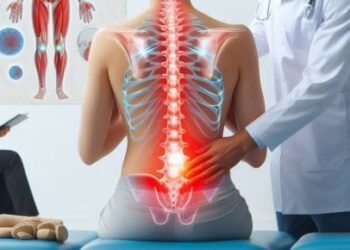
Surgery is a critical component of medical care, and advances in surgical techniques and technologies have significantly improved patient outcomes. By enhancing precision, reducing recovery times, and minimizing complications, these innovations contribute to better recovery for patients. This article explores the latest techniques and technologies that are transforming surgical practices and improving recovery outcomes.
Advances in Surgical Techniques
Minimally Invasive Surgery
Laparoscopic Surgery
Laparoscopic surgery, also known as minimally invasive surgery, involves making small incisions and using specialized instruments to perform procedures.
Procedure:
- Small Incisions: Surgeons make several small incisions rather than one large one.
- Laparoscope: A thin tube with a camera is inserted through one incision, providing a view of the surgical area.
- Instruments: Specialized instruments are used to perform the surgery through other incisions.
Benefits:
- Reduced Scarring: Smaller incisions result in minimal scarring.
- Faster Recovery: Patients experience quicker recovery times compared to traditional open surgery.
- Less Pain: Reduced pain and discomfort post-surgery.
Robotic-Assisted Surgery
Robotic-assisted surgery uses robotic systems to enhance the precision and control of surgical procedures.
Procedure:
- Robotic System: Surgeons control robotic arms equipped with surgical instruments.
- 3D Visualization: Provides a high-definition, three-dimensional view of the surgical site.
- Precision: Robotic systems allow for precise movements and control.
Benefits:
- Enhanced Precision: Increased accuracy in complex procedures.
- Reduced Complications: Minimizes the risk of complications due to precise movements.
- Quicker Recovery: Patients often recover faster and experience less postoperative pain.
Enhanced Recovery After Surgery (ERAS) Protocols
Preoperative Optimization
ERAS protocols involve comprehensive preoperative optimization to prepare patients for surgery.
Components:
- Nutrition: Preoperative nutritional support to enhance recovery.
- Exercise: Encouraging physical activity to improve fitness levels.
- Education: Informing patients about the surgical process and recovery expectations.
Benefits:
- Better Preparedness: Patients are better prepared physically and mentally for surgery.
- Reduced Stress: Understanding the process reduces anxiety and stress.
Intraoperative Techniques
ERAS protocols include specific intraoperative techniques to minimize surgical trauma.
Techniques:
- Minimally Invasive Surgery: Preference for laparoscopic or robotic-assisted procedures.
- Multimodal Anesthesia: Using a combination of anesthesia techniques to reduce pain and side effects.
- Temperature Management: Maintaining optimal body temperature to reduce complications.
Benefits:
- Less Trauma: Minimizes tissue damage and reduces inflammation.
- Improved Pain Management: Reduces the need for opioids and enhances recovery.
Postoperative Care
ERAS protocols emphasize proactive postoperative care to facilitate faster recovery.
Components:
- Early Mobilization: Encouraging patients to move and walk shortly after surgery.
- Pain Management: Using multimodal pain management strategies to control pain.
- Nutritional Support: Providing appropriate nutrition to support healing.
Benefits:
- Faster Recovery: Early mobilization and pain management speed up recovery.
- Reduced Hospital Stay: Patients often spend less time in the hospital.
Innovations in Surgical Technologies
Advanced Imaging and Navigation
Intraoperative Imaging
Intraoperative imaging technologies provide real-time visualization during surgery, enhancing precision and outcomes.
Technologies:
- Fluoroscopy: Real-time X-ray imaging to guide surgical procedures.
- Intraoperative MRI (iMRI): Provides detailed images of the surgical site during the procedure.
- Intraoperative CT (iCT): Offers high-resolution cross-sectional images to assist surgeons.
Benefits:
- Real-Time Guidance: Allows for immediate adjustments during surgery.
- Enhanced Precision: Improves accuracy and reduces the risk of complications.
Surgical Navigation Systems
Surgical navigation systems use advanced imaging and computer technology to guide surgeons during complex procedures.
Technologies:
- GPS-Like Guidance: Provides real-time, three-dimensional navigation similar to a GPS system.
- Augmented Reality (AR): Superimposes imaging data onto the surgical field for enhanced visualization.
Benefits:
- Improved Accuracy: Enhances precision in delicate surgeries.
- Reduced Errors: Minimizes the risk of errors and improves outcomes.
Laser and Energy-Based Technologies
Laser Surgery
Laser surgery uses focused light beams to perform precise surgical procedures with minimal damage to surrounding tissues.
Applications:
- Ophthalmology: Corrective eye surgeries like LASIK.
- Dermatology: Removal of skin lesions and cosmetic procedures.
- Oncology: Targeted removal of tumors.
Benefits:
- Precision: Highly precise targeting of tissues.
- Minimal Damage: Reduces damage to surrounding tissues and speeds up recovery.
Radiofrequency and Ultrasonic Technologies
Radiofrequency and ultrasonic technologies are used to cut, coagulate, and ablate tissues during surgery.
Technologies:
- Radiofrequency Ablation (RFA): Uses high-frequency electrical currents to destroy abnormal tissues.
- Ultrasonic Scalpel: Uses high-frequency sound waves to cut and coagulate tissues simultaneously.
Benefits:
- Reduced Bleeding: Coagulates blood vessels to minimize bleeding.
- Efficient Tissue Removal: Provides precise and efficient removal of tissues.
Postoperative Care and Rehabilitation
Pain Management
Multimodal Pain Management
Multimodal pain management involves using a combination of medications and techniques to control pain effectively.
Techniques:
- Non-Opioid Medications: NSAIDs, acetaminophen, and local anesthetics.
- Regional Anesthesia: Nerve blocks and epidurals to provide targeted pain relief.
- Complementary Therapies: Techniques such as acupuncture and physical therapy.
Benefits:
- Effective Pain Control: Provides comprehensive pain relief.
- Reduced Opioid Use: Minimizes reliance on opioids and their associated side effects.
Physical Rehabilitation
Early Mobilization
Early mobilization involves getting patients out of bed and moving as soon as possible after surgery.
Techniques:
- Walking and Ambulation: Encouraging walking and movement shortly after surgery.
- Physical Therapy: Customized exercise programs to restore strength and mobility.
Benefits:
- Faster Recovery: Promotes healing and reduces the risk of complications.
- Improved Outcomes: Enhances overall recovery and functional outcomes.
Specialized Rehabilitation Programs
Specialized rehabilitation programs are designed to address specific needs based on the type of surgery and individual patient requirements.
Programs:
- Cardiac Rehabilitation: Focuses on recovery after heart surgery, including exercise and lifestyle modifications.
- Orthopedic Rehabilitation: Tailored programs for joint replacement and other orthopedic surgeries.
- Neurological Rehabilitation: Programs for recovery after brain or spinal surgeries.
Benefits:
- Targeted Recovery: Provides focused support for specific surgical recovery needs.
- Comprehensive Care: Addresses physical, emotional, and psychological aspects of recovery.
Future Directions in Surgical Care
Artificial Intelligence (AI) and Machine Learning
Predictive Analytics
AI and machine learning are being used to analyze patient data and predict surgical outcomes.
Applications:
- Risk Assessment: Identifying patients at higher risk for complications.
- Outcome Prediction: Predicting recovery times and potential complications.
Benefits:
- Personalized Care: Tailors surgical and postoperative care to individual patient needs.
- Improved Outcomes: Enhances decision-making and improves overall outcomes.
Robotic Process Automation
Robotic process automation (RPA) can streamline administrative and clinical processes in surgical care.
Applications:
- Scheduling and Coordination: Automating appointment scheduling and surgical coordination.
- Data Management: Efficiently managing patient records and surgical data.
Benefits:
- Efficiency: Reduces administrative burdens and allows healthcare providers to focus on patient care.
- Accuracy: Minimizes errors in scheduling and data management.
Regenerative Medicine and Tissue Engineering
Stem Cell Therapy
Stem cell therapy is being explored to enhance tissue regeneration and repair after surgery.
Applications:
- Orthopedics: Promoting healing of bones, cartilage, and tendons.
- Cardiology: Repairing damaged heart tissue after cardiac surgery.
Benefits:
- Enhanced Healing: Accelerates tissue repair and reduces recovery times.
- Reduced Complications: Minimizes the risk of long-term complications.
3D Bioprinting
3D bioprinting involves creating customized tissue and organ structures for surgical use.
Applications:
- Custom Implants: Creating patient-specific implants and prosthetics.
- Tissue Regeneration: Printing tissues for regenerative medicine applications.
Benefits:
- Personalized Solutions: Provides tailored surgical solutions for individual patients.
- Innovative Treatments: Expands possibilities for complex surgical repairs and reconstructions.
Advances in surgical techniques and technologies are transforming the field of surgery, leading to improved patient outcomes and faster recovery times. Minimally invasive and robotic-assisted surgeries, enhanced recovery protocols, and innovative imaging and navigation systems are just a few examples of how modern medicine is enhancing surgical care. Postoperative care, including pain management and rehabilitation, plays a crucial role in ensuring successful recovery. As research and technology continue to evolve, the future of surgical care holds even greater promise for improved precision, reduced complications, and better overall outcomes for patients.










